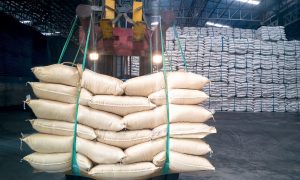Why these two agri industries are wary about India-US trade deal

India’s proposed trade deal with the US faces opposition from domestic sugar and soyabean industries. Sugar mills oppose ethanol or GM maize imports, fearing disruption to ethanol production. Soyabean processors reject GM soyabean imports, citing logistical, economic, and farmer livelihood concerns. Geopolitical pressure mounts, but opening markets risks destabilizing local agri-sectors and benefiting global agribusiness giants over Indian stakeholders.
Even as India and the United States work towards finalising a bilateral trade deal – ahead of a looming July 9 deadline for the reimposition of President Donald Trump’s so-called reciprocal tariffs – at least two major domestic agricultural-based industries are worried about the possible concessions that a deal might entail.
The sugar industry, for one, is against allowing imports of ethanol for use in blending with petrol. The mills aren’t also very keen on import of genetically modified (GM) maize/corn as a feedstock for fuel ethanol. The US is the world’s top producer as well as exporter of both maize and fuel ethanol.
The second is the soyabean processing industry. The Indore-based Soybean Processors Association of India (SOPA) has vehemently opposed imports of soyabean. The US is the second biggest producer and exporter of this leguminous oilseed after Brazil. Both countries mostly grow GM soyabean.
Given the US’ high stakes in these commodities – and the geopolitical imperative to find a sizeable alternative market to China – there’s significant pressure on India to remove restrictions on their imports.
But any such opening up in the India-US trade deal could encounter resistance from the two well-established agro-processing industries.
What sugar millers fear
The ethanol-blended petrol programme has been a success story of the Narendra Modi-led government.
Chart 1 shows that the average blending of ethanol in petrol sold by oil marketing companies (OMC) has risen from just 1.5% in 2013-14 to 14.6% in 2023-24. In the current supply year, from November 2024 till May 2025, the cumulative all-India average blending ratio was 18.8%, close to the target of 20% by 2025-26.
But the industry’s concerns are over the feedstock used for ethanol production. Express Graphic
Express Graphic
Till 2017-18, the entire ethanol for blending in petrol came from molasses, the leftover dark syrup after extraction of sugar crystals from cane juice. From 2018-19, the mills-cum-distilleries also began using cereal grains (mainly broken or old rice unfit for human consumption) as feedstock. Since 2023-24, the ethanol supplies from grain-based feedstock, particularly maize, has overtaken that from sugarcane molasses and whole juice (Chart 2).
For the 2024-25 supply year, a total 1,047.9 crore litres of ethanol have been contracted or made available to OMCs. Out of that, 710.4 crore litres or nearly 68% is from grain-based feedstock, including 483.9 crore litres from maize, 119 crore litres from the Food Corporation of India’s surplus rice and 107.5 crore litres from damaged/broken grains. Only the balance 337.5 crore litres are from molasses (144.7 crore litres) and sugarcane juice (192.8 crore litres).
“As it is, sugarcane is being marginalised as a feedstock. It would be worse with imports of maize or even ethanol itself,” says a miller from Uttar Pradesh.
According to him, the industry was already facing the prospect of stagnant, if not declining, domestic sugar consumption: “Our future isn’t sugar, but energy. Today, it is 20% ethanol-blended petrol. Tomorrow, it may be 5% blending in diesel or ethanol being converted through additional processing into sustainable aviation fuel producing lower carbon emissions compared to petroleum jet fuel”.
Ethanol from sugarcane, the miller claims, will not create any major “fuel versus food and feed” dilemma. “Sugar consumption won’t increase much in India, unlike milk, egg and chicken that need maize as the key feed ingredient. The diversion of maize for biofuel will cause huge demand-supply imbalances and shortage of grain for livestock and poultry,” he adds.
The US exported a record 1,914 million gallons (724.5 crore litres) of ethanol, valued at $4.3 billion, in 2024. India was its third largest market (after Canada and the United Kingdom), at 187 million gallons (70.8 crore litres) worth $441.3 million. India permits import of ethanol only under licence for industrial (non-fuel) purposes and restricted to “actual users”: Imports can be for manufacture of alcohol-based chemicals, but not for blending in petrol or diesel.
A recent NITI Aayog working paper has suggested that India import GM maize as a feedstock for ethanol production. The protein-rich byproduct from it – DDGS or distiller’s dried grains with solubles – may be entirely exported without getting consumed as a GM feed ingredient within the country.
“US corn is cheaper and can be used to meet India’s biofuel targets without disrupting local food and feed markets,” the paper – authored by NITI Aayog member, Ramesh Chand, and senior adviser, Raka Saxena – has stated.
Soyabean industry’s misgivings
The NITI Aayog paper has also called for exploring the option of importing soyabean, with the oil extracted from it being sold in the domestic market and the residual de-oiled cake or meal (which contains GM protein matter) exported to other countries.
SOPA’s executive director, DN Pathak, counters this proposal. “Most of our solvent extraction plants are in the interiors (especially Madhya Pradesh and Maharashtra) where the crop is grown. It’s not feasible for them to bring imported soyabean from the ports, process it and then take back the meal for exports. The freight cost economics will simply not work. And what will happen to the 7 million-odd farmers cultivating soyabean here?,” he asks.
Indian processors crush 11-12 million tonnes (mt) of soyabean annually to produce 9-9.5 mt of meal. Out of that, 7-7.5 mt is domestically consumed as feed and food ingredient and the rest 2 mt or so exported. This is way below the 105-110 mt that China crushes every year. Much of that soyabean is imported to meet the feed requirement of its humungous swine herd and poultry flock: China is home to roughly half of the world’s pig population and a fifth of its chickens.
“We don’t have this kind of domestic market for soyabean meal. Also, if the GM meal cannot be sold within the country, the processing plants will have to be nearer to the ports for exports. The ones more likely to put up these are the international commodity trading giants such as AWL Agri Business (formerly Adani Wilmar), Archer Daniels Midland, Bunge, Cargill and Louis Dreyfus,” explained Pathak.
SOPA has also voiced concern at the Centre’s decision, on May 30, to slash the effective import tariff on crude soyabean, palm and sunflower oil from 27.5% to 16.5%. That will further squeeze the margins of domestic processors, “as they will have to compete with lower-priced imported oils, forcing them to operate below break-even capacity or shut down altogether”.
Soyabean is now trading in MP and Maharashtra’s mandis at Rs 4,300-4,350 per quintal, as against its official minimum support price of Rs 5,328. A surge in imports, whether of oil or seed, can lead to farmers switching acreage to other crops.
To Read more about Sugar Industry continue reading Agriinsite.com
Source : The Indian Express














